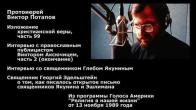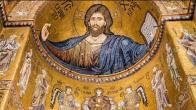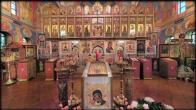You are here
Neo-martyr Nicholas of Vounenissa, Greece
9/22 May
St. Nicholas was born in the East. He was a pious young man. Soon after he entered military service, Emperor Leo VI (The Wise) recognized his abilities and appointing him to lead 1,000 men, sent them to Larissa in the Greek province of Thessaly. St. Nicholas prepared his troops for military battle, but also for spiritual warfare. In April 601, the Arabs assaulted Thessaly and began a wholesale slaughter of the populace. When the foe approached Larissa, St. Nicholas understood that they were incapable of defending the city, and therefore, he ordered the city to be evacuated, and ordered a military retreat. St. Nicholas and a small contingent of troops joined a community of 12 monks, and together with them shared a monastic existence on a mountaintop some12 kilometers from Larissa. Once during the night, as St. Nicholas and his co-strugglers were preparing to pray, the Angel of the Lord appeared to them and announced that they would soon receive martyrs’ crowns.
Soon the enemy stood directly before their solitary skete. St. Nicholas and his soldiers resisted desperately, but they were taken and imprisoned, and suffered awful tortures. Most of them were killed.
St. Nicholas fled and hid in the forest not far from the settlement of Vounenissa. He became a hesychast and spent his time in a cave, next to which grew an enormous oak. Some time later, the Arabs found him as well, and incarcerated the warrior. They tried to persuade St. Nicholas to renounce the Christian faith, but quickly recognized that their efforts would not meet with success. Therefore, they put him to death, running him through with his own spear.
After the departure of the Arabs, the bishop of Larissa returned to his diocese and transferred the relics of the holy martyrs to the city. However, the relics of St. Nicholas miraculously appeared in a hollow in the trunk of the oak tree.
In 985, Prince Euthymianus of Thessalonika contracted leprosy. His doctors were powerless to help the poor man, and thus he turned in prayer to the worthy ones of God. He venerated the relics of Great Martyr Demetrius of Thessalonica and made a pilgrimage to the tomb of St. Achilleios in Larissa. Here, in a dream, he was directed to go to the mountain of Vounenissa and immerse his sick body in the holy spring next to the place of burial of Martyr Nicholas. Upon carefully searching the place of burial of the holy martyr, Euthymianus found his holy relics, and thereafter built a church to house them. After a second revelation, he found the spring, and in the Name of the Holy Trinity, immersed himself thrice in its miraculous waters, and received healing from his awful illness.
The oak of St. Nicholas stands to this day. Every year on the anniversary of his martyrdom, services are held next to the oak, and from the oak there pours blood-like liquid. The faithful carefully collect it in bottles and use it with faith to heal physical and spiritual maladies. The Holy Martyr Nicholas is especially renowned for healing diseases of the skin. It is noteworthy that the “miracle of blood” occurs on the saint’s day according to the old calendar. For this reason, the new-calendarist Church of Greece has to celebrate his memory according to the old calendar.
In November 1998, when Fr. Victor and his matushka were in Greece, a pious servant of God named Helena gave them a detailed account of the miracle of blood of Neo-martyr St. Nicholas of Vounenissa, and gave them several bottles of the blood-like liquid.
Relics in cathedral - monthly calendar
| S | M | T | W | T | F | S |
|---|---|---|---|---|---|---|
|
1
|
2
|
3
|
4
|
5
|
6
|
7
|
|
8
|
9
|
10
|
11
|
12
|
13
|
14
|
|
15
|
16
|
17
|
18
|
19
|
20
|
21
|
|
22
|
23
|
24
|
25
|
26
|
27
|
28
|
|
29
|
30
|
31
|
|
|
|
|
PARISH LIFE
Address of our Cathedral
While all the materials on this site are copyrighted, you may use them freely as long as you treat them
with respect and provide attribution on the Russian Orthodox Cathedral of St.John the Baptist of Washington DC.









